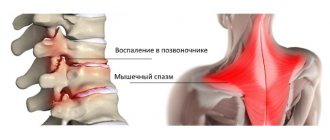The term “bronchial obstruction” means narrowing of the lumen of the bronchi by pathological formations. The causes of this condition vary. As a result, a sufficient amount of air ceases to flow into the lungs, and respiratory failure occurs. At the same time, the outflow of mucus is disrupted, along with which pathogenic microorganisms are removed from the respiratory tract, and this leads to inflammation of the lungs - pneumonia.
- Causes
- Symptoms of bronchial obstruction in cancer
- Diagnostics
- Treatment of bronchial obstruction in cancer patients
- Forecast
If the patency of the bronchi is impaired by a malignant tumor, then the term “malignant bronchial obstruction” is used. In oncology, it is most often found in lung cancer. As a rule, this complication occurs in the late stages of cancer. Bronchial obstruction worsens the condition of the cancer patient, reduces the quality and life expectancy.
Chemotherapy and radiation therapy help reduce the size of a malignant tumor, but they cannot quickly improve the condition of a patient with severe bronchial obstruction. For this purpose, special palliative treatment methods are used.
The goals of treatment for patients with bronchial obstruction are to ensure normal ventilation of the lungs as quickly as possible and eliminate the symptoms of respiratory failure. The clinics of the Euroonko federal network use the most modern techniques, and our doctors are ready to help at any time of the day.
Causes
According to some estimates, 40% of deaths associated with lung cancer are caused by locoregional disease, that is, malignant tumors that have invaded surrounding tissues and spread to regional lymph nodes. In the United States, 80,000 patients are treated annually for malignant airway obstruction. In 20–30% of patients with malignant tumors of the lungs, complications associated with bronchial obstruction develop: atelectasis (collapsed lung), shortness of breath, hypoxemia (decreased oxygen content in the blood), hemoptysis, pneumonia (pneumonia), distress syndrome (life-threatening a condition associated with inflammation of the lung tissue).
All causes of bronchial obstruction in cancer can be divided into four groups:
- Primary malignant tumors of the bronchi are quite rare. Most often these are squamous cell and adenoid cystic carcinomas.
- Growth of a malignant tumor from a neighboring organ into the wall of the bronchus. Most often it is lung cancer. Cancer of the larynx, esophagus, and thyroid gland can also grow into the bronchi.
- Metastases. Breast, colon, kidney, thyroid and other malignant tumors can metastasize into the respiratory tract. This is a rare phenomenon, occurring in 2% of cases.
- Compression of the bronchus from the outside by malignant tumors, which are located, for example, in the lung, esophagus or thyroid gland.
Depending on where the tumor is located, there are three types of malignant bronchial obstruction:
- Endoluminal (intraluminal, internal) - a tumor in the wall of the bronchus.
- Extraluminal (extraluminal, external) - a malignant tumor in a neighboring organ that compresses the bronchus.
- Mixed - a combination of the two previous options.
Bronchial hyperreactivity syndrome
The situation when a cough occurs for no clearly visible reason is familiar to many people. Sometimes these are long-term residual effects after an acute respiratory viral infection, which seemed to have happened quite a long time ago. In other cases, there has been no illness in the recent past, but the cough is still present. One explanation for this mystery is bronchial hyperreactivity (BHR), a pathological condition of the lower respiratory tract.
Overprotection
The respiratory tract is designed to bring oxygen into the body - and in performing this function, they obviously come into contact with the external environment. And outside there is not only oxygen, but also dust, insects, irritating substances that damage the delicate mucous membrane, and even ordinary crumbs that fall “in the wrong throat” due to chatter while eating.
To protect the bronchi from what should not enter them, two ways have emerged. The first is mucociliary clearance: a system of special cells that secrete mucus and bronchial cilia, which with their movement “drive” this mucus from the inside out. The second is a reflex response to irritation: mechanical (conditional “crumbs”), chemical (irritating substances), thermal (cold/hot air). The main reflexes are the cough impulse and the ability of the bronchi to sharply narrow in response to an irritant.
The narrowing of the bronchi sharply limits the intake of irritants; what has already entered “settles” on the mucus, the cilia expel this mucus from the bronchi, and a reflex cough helps to finally get rid of it (coughing up phlegm). This is how everything happens normally. But if for some reason the cells that perceive irritation (irritative receptors) have a “misplaced reference”, false positives begin - the bronchi react to irritants that actually do not pose a danger to the body: a small number of dust particles, low concentrations of chemicals, small temperature changes. This is how an unreasonable cough occurs.
Where is the breakdown?
There are two main reasons why irritative receptors turn into paranoids. Firstly, there is an imbalance in the functioning of the sympathetic and parasympathetic parts of the nervous system. The first is responsible for the expansion of the bronchi, the second - for the narrowing. If parasympathetic activity is higher than normal, the receptors are always on alert and narrow the lumen of the bronchi with or without reason.
The second option is damage to the “ciliated” layer of the bronchial mucosa, which has a beautiful name: ciliated epithelium. As a result of adverse effects (burn of the respiratory tract, viral damage, chemicals), some of its cells die. This has two consequences: firstly, mucus is no longer expelled from the bronchi so effectively; secondly, irritative receptors are “naked” and become more sensitive.
Variants of the course of BHR
There are three main variants of the course of bronchial hyperreactivity: non-infectious obstructive bronchitis, broncho-obstructive physical stress syndrome and recurrent paroxysmal cough.
Symptoms of bronchial obstruction in cancer
In mild cases, malignant bronchial obstruction manifests itself in the form of cough and shortness of breath during exercise. Sometimes these symptoms become the first manifestations of cancer, the patient turns to a general practitioner, and for a long time they cannot get the correct diagnosis. Such patients are often treated for a long time for other diseases, for example, bronchial asthma or chronic obstructive pulmonary disease (COPD) - usually suspicion primarily falls on these pathologies.
In more severe cases, cough and shortness of breath occur not only during physical activity, but also at rest. Other symptoms are added:
- hemoptysis - blood appears in the sputum that the patient coughs up;
- hoarseness of voice;
- discomfort, chest pain;
- orthopnea - it is easier for the patient to breathe when he is sitting, and more difficult when he is lying down;
- dysphagia - difficulty, discomfort when swallowing;
- in the most severe cases, asphyxia develops - suffocation.
Sometimes malignant bronchial obstruction does not cause symptoms and is discovered incidentally during a CT scan.
How far does a malignant tumor have to block the airway for symptoms to appear?
There is no clear answer to this question. Often, “severe bronchial obstruction” is a condition when the diameter of the bronchial tube is 50% less than normal. You can find information that with tracheal obstruction, symptoms during physical activity appear when its lumen becomes less than 8 mm, and symptoms at rest - when less than 5 mm. But these data have not been scientifically confirmed.
It is important to understand that the strength of the air flow depends not only on the width of the airway. The condition of the respiratory muscles, lungs, and the elasticity of the chest wall plays a role. The rate of increase in obstruction is important, and it, in turn, depends on the rate of growth of the malignant tumor. If the patient is very anxious, very frightened, then he will tolerate shortness of breath worse. Concomitant diseases of the heart and other organs contribute.
To correctly assess the patient’s condition and select the optimal treatment, the doctor must take into account many factors.
Bronchial obstruction - execution for the lungs!
Bronchial obstruction syndrome is a complex of symptoms, the leading signs of which are shortness of breath, which occurs as a result of restriction of air flow in the bronchial tree, mainly on exhalation, caused by bronchospasm, swelling of the bronchial mucosa and discrinia.
Bronchial obstruction syndrome in the vast majority of cases is the result of degenerative changes and/or an inflammatory process in the mucous membrane of the bronchial tree.
Bronchial obstruction can be a manifestation of an acute disease - acute bronchitis and pneumonia. However, most often it is the main clinical syndrome of chronic obstructive pulmonary disease (COPD) and bronchial asthma, angioedema, lung cancer, and bronchitis. The development of persistent bronchial obstruction syndrome is caused by complex restructuring of the wall of the bronchial tree under prolonged exposure to tobacco smoke, dust, toxic gases, allergens, and repeated respiratory infections and inflammation. Which leads to thickening of the bronchial wall due to swelling of the submucosal layer and bronchial glands, hypertrophy of smooth muscles, fibrotic changes.
The result of all changes is a cough with the release of mucous and/or mucopurulent sputum. As a result, alveolar ventilation deteriorates and blood oxygenation decreases (oxygen saturation) and you may experience attacks of suffocation.
To clarify all the circumstances, you need to contact experienced specialists at the Pulmonology Center.
Diagnostics
The scope of the examination depends on the patient's condition. Before starting treatment, it is highly advisable to conduct a thorough diagnosis. But sometimes the patient is in critical condition, and there is no time to perform even a routine x-ray. The doctor must carefully assess the situation and compare the benefits of certain diagnostic methods with the risks associated with delaying treatment.
Chest X-rays rarely provide valuable information. However, it is often performed when bronchial obstruction is suspected, since it is a quick and accessible diagnostic method, it helps to identify gross disorders: large tumors, collapse of part or all of the lung.
Computed tomography is much more informative. It allows you to detect a malignant tumor, assess its size, location, type, degree and extent of obstruction, the condition of adjacent anatomical structures, and the patency of the airways below the site of narrowing. Using CT, you can identify collapsed lungs (atelectasis, collapse), pneumonia and correctly plan treatment.
Spirometry is used to assess pulmonary function. This diagnostic method helps to assess the volume of inhaled and exhaled air and the speed of its flow. During the study, the patient is given a mouthpiece connected to the device, a clamp is placed on the nose and asked to breathe through the mouth through the mouthpiece in different modes.
The gold standard in the diagnosis of malignant bronchial obstruction is bronchoscopy, endoscopic examination of the bronchi. During this procedure, the doctor examines the mucous membrane of the respiratory tract and, having detected pathological formations, can immediately perform a biopsy - obtain a tissue sample for histological examination. In addition, bronchoscopy can immediately relieve obstruction and allow free breathing.
Diagnostic bronchoscopy usually takes about 30 minutes and can be performed on an outpatient basis without hospitalization. If you need to perform medical manipulations, the procedure takes longer. At Euroonco clinics, all endoscopic examinations are performed in a state of light anesthesia—medicated sleep. Thanks to this, the patient does not feel discomfort. Awakening occurs in about 40 minutes, and after an hour you can go home.
Treatment of bronchial obstruction in cancer patients
Bronchial obstruction does not always need to be treated with surgery. If the bronchus is not very narrowed, the symptoms are very mild, and the tumor is highly sensitive to chemotherapy and radiation (for example, small cell lung cancer), then radiation therapy and antitumor therapy can be used.
In other cases, it is usually possible to free the bronchial lumen using endoscopic procedures:
- Removal with a microdebrider. A microdebrider is a rotating blade inside a metal catheter through which the removed pieces of tissue are sucked out. In the right hands this is a very effective tool. However, the microdebrider is only applicable to tumor obstruction of the trachea and upper main bronchi, and can only be used in conjunction with a rigid bronchoscope.
- Laser removal. The laser beam simultaneously destroys tumor tissue, stops bleeding and destroys pathogens. An important advantage of laser surgery is that it does not affect the functioning of pacemakers and defibrillators. There is evidence of the successful use of laser surgery in combination with radiation therapy: the laser removes tumor tissue immediately, and radiation therapy provides a delayed effect and helps prevent recurrent obstruction.
- Argon plasma coagulation involves the removal of tumor tissue using an argon plasma torch. The instrument is a tube containing argon gas and an electrode. When current is applied to the electrode, the argon transforms into a plasma state and a spark occurs. Argon plasma coagulation ensures high precision and minimal blood loss.
- Stenting is a procedure during which a stent, a tube made of polymer material or metal is installed into a blocked area of the airway. This prosthesis expands the lumen of the bronchus and ensures free movement of air. Stents are made of metal (usually nitinol, an alloy of nickel and titanium) without coating or with a coating of silicone or polyurethane. There are models made entirely of silicone. Their sizes vary. There are stents for the trachea, bronchi, and bifurcated stents (Y-stents).
- Photodynamic therapy is used when immediate treatment is not required. The patient is injected with a special drug - a photosensitizer, which accumulates in cancer cells. After some time, a bronchoscope is inserted into the respiratory tract and light is applied to the tumor through it. The photosensitizer is activated, and this leads to the death of cancer cells.
- Electrocautery is the removal of tumor tissue by cauterization with electric current.
- Cryosurgery is the destruction of tumor tissue using low temperature.
- Brachytherapy is a type of radiation therapy. During this procedure, a radiation source is inserted directly into the airways using a bronchoscope.
- In rare cases, a malignant tumor is removed using a rigid bronchoscope. With its help, you can quickly expand the lumen of the bronchus in emergency cases.
Since malignant bronchial obstruction most often occurs in advanced stages of malignant tumors, all these procedures are performed for palliative purposes. Their task is not to get rid of cancer, but to improve the patient’s condition. But sometimes a malignant tumor can be completely removed, and in such situations radical surgery is indicated.
Symptoms
If you take mild cases of cancer, the symptoms are cough and shortness of breath. The second manifests itself sharply when the body experiences physical stress. The problem is that often people turn to a therapist with these symptoms; the correct diagnosis cannot be established immediately, and the patient is treated for other diseases, for example, bronchial asthma. Precious time is wasted. This also happens in cases where the pathology develops asymptomatically.
When the form of cancer is more severe, cough and shortness of breath become constant companions of a person, and in addition, the pathology manifests itself with new symptoms:
- Hoarseness;
- Impurities of blood in sputum;
- Discomfort, chest pain;
- Feeling of discomfort when swallowing;
- Asphyxia.
Forecast
If malignant bronchial obstruction is not eliminated, the patient's life expectancy will be greatly reduced. Often the survival of such patients is only 1–2 months. It has been proven that palliative interventions help not only prolong life, but also significantly improve the patient’s condition.
Treatment of late-stage cancer is the main focus of the Euroonko federal network of expert oncology clinics. Our doctors have extensive experience in dealing with complications of cancer, including malignant bronchial obstruction. Even if it is impossible to achieve remission, we make every effort and use the most modern techniques to prolong the patient’s life as much as possible and ensure his well-being.
Book a consultation 24 hours a day
+7+7+78
About terminology
Bronchial obstruction is understood as a narrowing of the lumen of the bronchi due to pathological formations. The result of such a narrowing is a lack of air entering the lungs and, as a result, respiratory failure.
At the same time, a person experiences a disruption in the outflow of mucus, which removes pathogenic microbes from the respiratory tract. The latter leads to the development of pneumonia.
The causes of bronchial obstruction can be different, one of them is cancer. In this case, it is logical to use the term “malignant bronchial obstruction” (MBO). It usually occurs when the lungs are affected by a tumor. Medical practice shows that cancer in most cases develops in the later stages of the disease.
ZBO negatively affects the patient’s condition, reduces his quality of life, and shortens its duration.
Treatment through chemotherapy and radiation therapy reduces the size of the tumor, but they do not improve the patient’s condition. Palliative treatment can do this.







